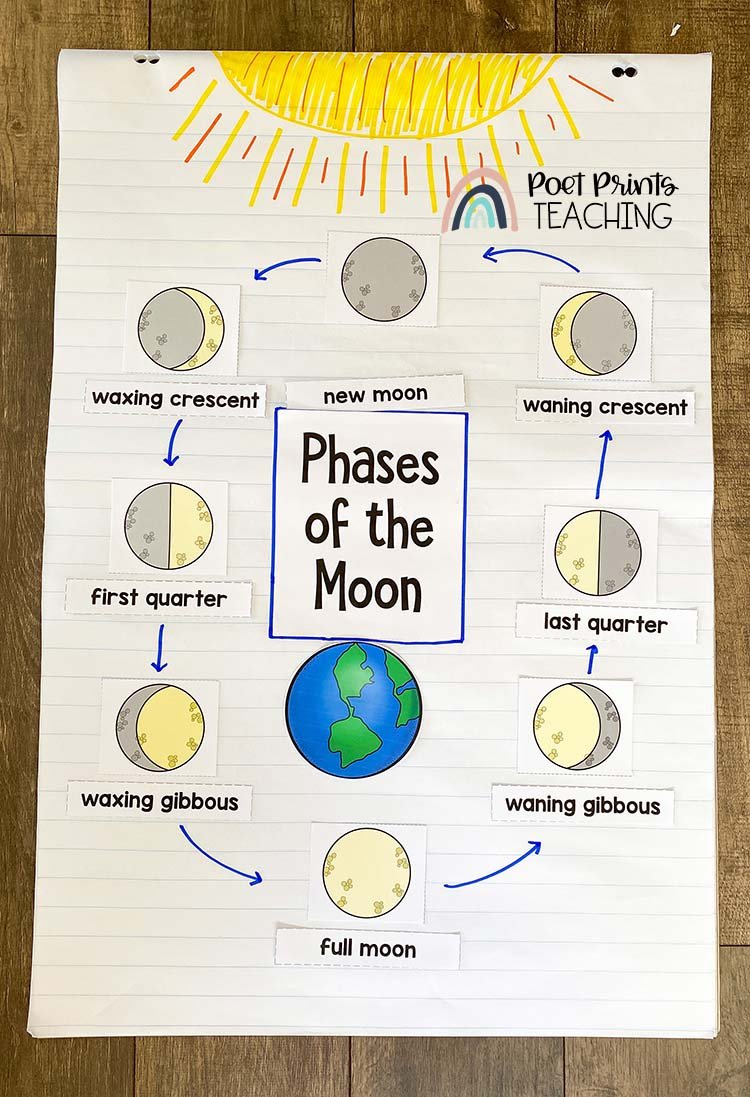Motions of the Earth, Moon, and Sun - Space Science for Kids
“Ground control to Major Tom!” This song SO easily gets stuck in my head when I’m working on anything space related. And it’s not even the David Bowie version that gets stuck in my head, it’s the Chris Hadfield version, where he sings it from space. I love teaching students about the motions of the Earth, moon and Sun. There are so many awesome space science lessons for kids. So let’s check out a few!
Space Science For Kids - The Motions of the Earth, Moon, and Sun.
What’s the Motion of the Earth?
The Earth is constantly in motion. The Earth orbits around the Sun. An orbit is the path that an object takes when it revolves around another object. A revolution is the circular movement of an object around another object. The Earth also rotates on its axis.
What causes day and night?
As the Earth orbits the Sun, it also rotates on its axis. It takes the Earth 24 hours to rotate. The side of Earth facing the Sun experiences day and the side of Earth facing away from the Sun experiences night.
Why does earth have seasons?
Top: Informational Text passages all about how the earth, sun and moon move in the sky.
Bottom: Informational text passages all about tides.
The earth’s orbit isn’t a perfect circle. This means that sometimes it is closer to the Sun and the weather is warmer, like in spring and summer. Sometimes the Earth is further away from the Sun and the weather is colder, like in the winter. The Earth’s revolution causes the changes in seasons.
What causes ocean tides on earth?
Tides are always changing and it is the moon’s gravitational pull that causes these changes. Tides rise and fall depending on where the moon is in the sky.
Now that we have some background information about the motion of the Earth, moon and Sun, let’s take a look at some activities to get students excited about space!
Plan the Whole Unit in One Click!
Get ready to teach your ‘Motions of the Earth’ science unit in one step.
This engaging unit includes everything you need to teach students about how the earth, sun, and moon move.
Reading passages, scripted lessons, activities, and project-based learning are all included!
Make a Moon Board
Using this moon board, students can poke their heads through the middle and rotate the board to see why the moon appears to be different shapes at different times.
I love creating visuals that help my students learn. This Moon Board activity will help students identify why the moon appears differently in its separate phases. You’ll need a few things for this activity, including black foam board, 8 small white balls like ping pong balls, black paint, a print out of the Sun, Phases of the Moon labels, sharp scissors and hot glue.
Using these supplies, create a Moon Board that looks like this one. After creating the Moon Board, students can put their head inside and as they rotate the board around, they will observe each of the different moon phases!
Detailed instructions and print-and-cut templates are available in this Motions of the Earth unit.
Want to watch me assemble this moon board? I made a Reel over on Instagram. You can check it out here.
Anchor Charts
Anchor charts are a great way to show how the Earth and moon move. I’m a huge believer that anchor charts should be made with students instead of ahead of time. I also love printing out labels and pictures so students don’t have to watch me try to draw things! Gluing labels and pictures into place is SO much easier than trying to draw and print neatly.
For example, I like to print out large cards of moon phases and put them on a chart paper to create an anchor chart.
As another anchor chart idea, you can make a Venn Diagram anchor chart about the similarities and differences of solar and lunar eclipses. Have students come up with the ideas and you write them down as the ideas arise.
Act it Out
Head out to a place, like a field or the gym, where your students will have space to move. Then label kids as “Sun”, “moon”, “Earth”. Have your students rotate and revolve with their bodies to act out how the Sun, moon and Earth move.
Create an Eclipse Comic
I love combining science with other curricular areas. In this activity, students will use their knowledge of comic strips and writing, as well as their artistic skills and creativity, to create a comic about either a lunar eclipse or a solar eclipse. You will likely have to review characteristics of a comic and how to properly use speech bubbles.
Students can pick a comic template and begin to draw. Throughout the process, make sure to review and use checklists to ensure students know what criteria you are looking for in their comic. I love seeing what students come up with as they create their eclipse comics.
There are so many fun ways to teach about the motions of the Earth, moon and Sun. If you have any other awesome lessons, send them my way! I love seeing what other people do.







